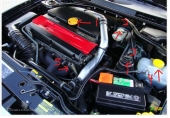
 2
2




'What we do now echoes in eternity.' Marcus Aurelius
How Permies Works Dr. Redhawk's Epic Soil Series








 2
2




'What we do now echoes in eternity.' Marcus Aurelius
How Permies Works Dr. Redhawk's Epic Soil Series
 7
7




![Filename: saab-alt.jpg
Description: [Thumbnail for saab-alt.jpg]](/t/189081/a/184666/saab-alt.jpg)
Our inability to change everything should not stop us from changing what we can.








 3
3




'What we do now echoes in eternity.' Marcus Aurelius
How Permies Works Dr. Redhawk's Epic Soil Series








 4
4




'What we do now echoes in eternity.' Marcus Aurelius
How Permies Works Dr. Redhawk's Epic Soil Series

 5
5




Our inability to change everything should not stop us from changing what we can.








 2
2




'What we do now echoes in eternity.' Marcus Aurelius
How Permies Works Dr. Redhawk's Epic Soil Series








 2
2




'What we do now echoes in eternity.' Marcus Aurelius
How Permies Works Dr. Redhawk's Epic Soil Series
 6
6




Trees are our friends








 4
4




'What we do now echoes in eternity.' Marcus Aurelius
How Permies Works Dr. Redhawk's Epic Soil Series

 4
4




Our inability to change everything should not stop us from changing what we can.








 3
3




'What we do now echoes in eternity.' Marcus Aurelius
How Permies Works Dr. Redhawk's Epic Soil Series
 6
6




Trees are our friends








 2
2




'What we do now echoes in eternity.' Marcus Aurelius
How Permies Works Dr. Redhawk's Epic Soil Series








 5
5




'What we do now echoes in eternity.' Marcus Aurelius
How Permies Works Dr. Redhawk's Epic Soil Series
 2
2




Trees are our friends








 2
2




'What we do now echoes in eternity.' Marcus Aurelius
How Permies Works Dr. Redhawk's Epic Soil Series
 5
5




Trees are our friends








 5
5




'What we do now echoes in eternity.' Marcus Aurelius
How Permies Works Dr. Redhawk's Epic Soil Series








 5
5




'What we do now echoes in eternity.' Marcus Aurelius
How Permies Works Dr. Redhawk's Epic Soil Series

 6
6




Our inability to change everything should not stop us from changing what we can.








 2
2




'What we do now echoes in eternity.' Marcus Aurelius
How Permies Works Dr. Redhawk's Epic Soil Series
 5
5












 2
2




The voltages should be something like this:
Car off, key in STOP:
battery 12V
battery terminals 12V
cigarette lighter 12V
key to I
battery 11V
battery terminals 11V
cigarette lighter 11V
If you manage to start the engine and measure again, it should be:
battery 14V
battery terminals 14V
cigarette lighter 14V
(post 11 here..)
'What we do now echoes in eternity.' Marcus Aurelius
How Permies Works Dr. Redhawk's Epic Soil Series

 2
2




Our inability to change everything should not stop us from changing what we can.












'What we do now echoes in eternity.' Marcus Aurelius
How Permies Works Dr. Redhawk's Epic Soil Series
 3
3




 1
1




E.L. Dunn wrote:MOST vehicles pound a charge of 14 volts, give or take. For example, a GM vehicle will not barely turn over if it does not have 14.2 volts running to the starter. Not always true, but pretty much common. I remember Saabs are not quite so picky, BUT, avail yourself of a volt/ohm meter from what..harbor freight or some such? Sometimes free if you buy whatever, but get one-It works on all vehicles and house wiring and is a damned handy thing to have around.
I drive an Alfetta GTV6, and it will roll over at 13 volts, no problem. Depends on the whole universe, I suppose...

 2
2




Our inability to change everything should not stop us from changing what we can.












'What we do now echoes in eternity.' Marcus Aurelius
How Permies Works Dr. Redhawk's Epic Soil Series
 1
1





 2
2




Our inability to change everything should not stop us from changing what we can.

|
What could go wrong in a swell place like "The Evil Eye"? Or with this tiny ad?
Homestead Pigs Course
https://permies.com/wiki/365748/Homestead-Pigs
|





